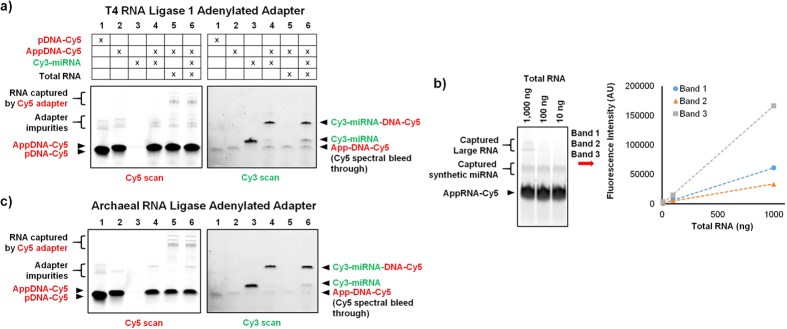Figure 4. microRNA-adapter ligation was performed using adenylated adapters generated by either (a) T4 RNA ligase 1 or (c) archaeal RNA ligase.

The adapters were labeled with Cy5 while the synthetic microRNA were labeled with Cy3. Lanes 1 and 2 show that both methods are capable of fully adenylating the adapters. Lanes 4 and 6 show that let-7a microRNA can be effectively ligated both in the absence and presence of total RNA background. Lane 5 shows that large RNA molecules within the total RNA are captured by both adapters. No de-adenylation is observed with either method. (b) The T4 RNA ligase 1 adenylated adapter was used to capture RNA from 10, 100, or 1000 ng of pancreatic tissue total RNA spiked with 0.01 picomoles of 6 synthetic microRNA. The three ligation products from the top are large RNA molecules intrinsic to the total RNA that have been captured by the adapter. As expected, they vary in linear proportion to the total RNA input. The band in the middle is the spiked microRNA captured by the adapter which remains constant across all three samples as expected. The large band at the bottom of the gel is free adenylated Cy5 adapter.
